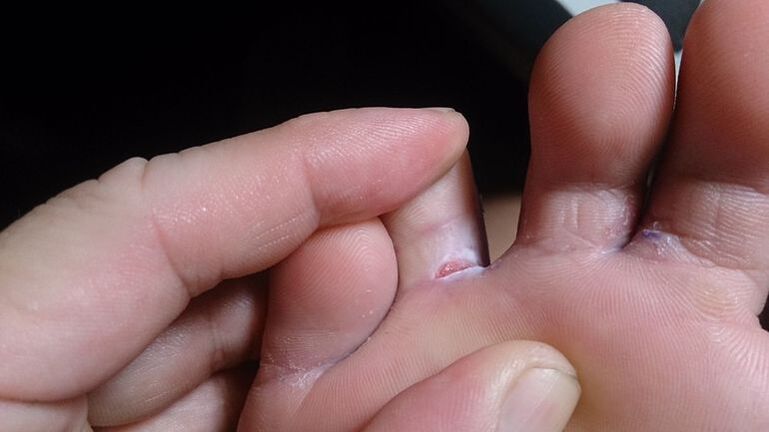
Mycosis is a group of diseases caused by pathogenic fungi.Skin areas that affect these microorganisms are called dermatomycosis.Sometimes they are combined with onycomycosis - nail disease.Knowing how you look at the fungus in the legs, you can cure the disease in a timely manner and prevent complications.There are several opportunities for the course of this pathology.
Foot infection mechanism
There are factors that directly affect the ability to become infected with a fungus.Also, much in this regard depends on the state of immunity.When body protection decreases, the probability of development of mycosis increases significantly.Immunity can weaken chronic infectious diseases, endocrine system pathologies.You can become infected with a fungus in a straight and indirect way.In the first case, this happens through:
- Layers of the Earth;
- different plants;
- Contact with an infected person or animal.
An indirect route involves the use of hygiene and other things that the patient actively uses.
Candida genus fungi live on the surface of the epidermis.When the composition of the separated separation glands changes, a nutrient medium for the development of microorganisms is formed.Candida group representatives acquire pathogenic properties.This means that they can easily cause disease.
Classification of mycoses
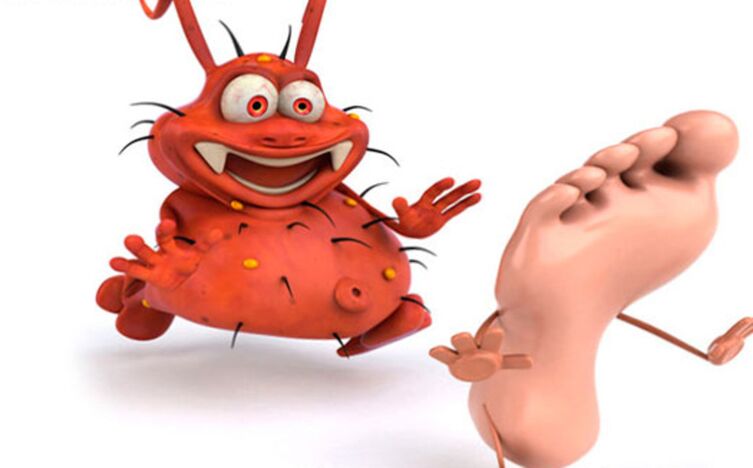
With epidermophitosis, skin and nails are affected.You can become infected with this disease in public places: in gyms, saunas.Through which objects are most often transmitted the pathogen:
- towels;
- washing clothes;
- oil clothes;
- Mats.
Men in adulthood suffer from epidermofite more often.A favorable factor for the development of the disease is an increase in sweating.
Trichophytosis can be caused by different types of fungi from a group of trichophyton.The disease is considered very contagious.It is transmitted through the shoes that wear an infected subject, washing clothes, towels and other bathroom accessories.Most often the pathology is found in children.Approximately 17% is prevalence in adolescents.Young people usually suffer.Among the men of adulthood, the incidence is even greater.At risk are worker workers, baths, showers, athletes, miners.
Candidiasis of stopping, compared to epidermofitia, is less common.Most Candida fungus belongs to the conditional pathogen group.This means that these microorganisms are present in the human epidermis in the norm.They acquire pathogenic properties after a decrease in immunity.
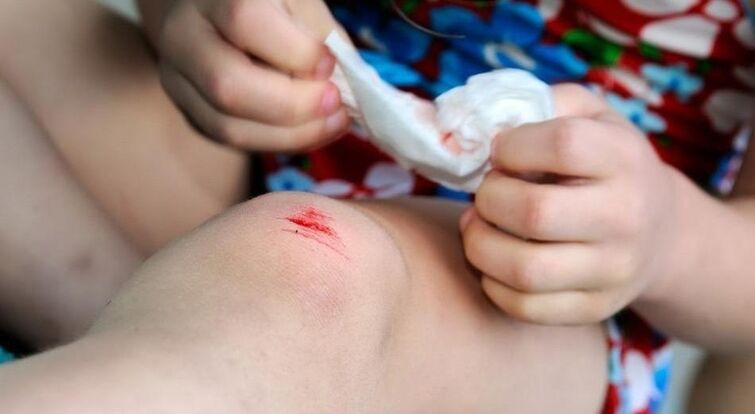
In order for Candida fungi to enter the body, it is enough to use objects belonging to the patient.These microorganisms are often present in food products such as meat, milk and milk.The risk of infection increases in the presence of such factors:
- skin damage due to exposure to chemical ingredients, alkalis and acids;
- Maceration, sweating of the skin;
- The presence of fungi in the air in large quantities.
Symptoms of the disease
By the nature of the course, the rubricism and epidermophitosis are similar.For this reason, experts combine them into one category - Mikoza Stop.It is distinguished by the scaly, double -headed and integrinosa of its forms.A special group is onychomycosis, which can be:
- atrophic;
- normotrophic;
- hypertrophic.
With double mycosis, sweat gland work is prevented.The fungus on the fingers with an intertrical shape looks like diaper rash.Despite such a division, it should often be considered conditional, as different variations of the disease combine.
Squamosis and double
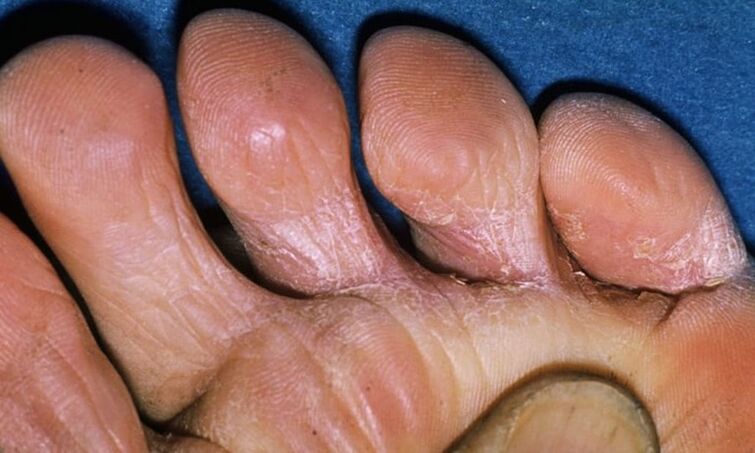
At first, the squamous shape of the mushrooms touches one side.Then it passes to the opposite.The rash areas form on the skin, which gradually begin to peel.Individual patients complain of itching.The area of damage can be large and small, depending on the patient's body.There are people who suffer from this form of mycosis, but nothing bothers them.
The fungus on the skin of the legs with a double -sided shape appear in particular: bubbles are formed with a diameter of 2 to 8 mm in large quantities formed in the arc of the foot.Little by little, they begin to join in larger formations, and then explode.Instead, ulcerative skin lesions are formed.Sometimes the process passes to the inner and outer side surface.Bubbles open, and in their place you can see areas of diaper rash with erosion.
The fungus in the legs also manifest in itching and pain.Erosion is in the dry future and heals, and the peel is formed in their place.Fungal infection can be complicated by bacteria.In this case, the fluid placed inside the bubbles is done with cloudy.The skin on the foot swells, blushes.A double form is characterized by a long stream.Prayer periods alternate with irritation.Usually, the fungus with this shape affects only one foot.
Intrigue
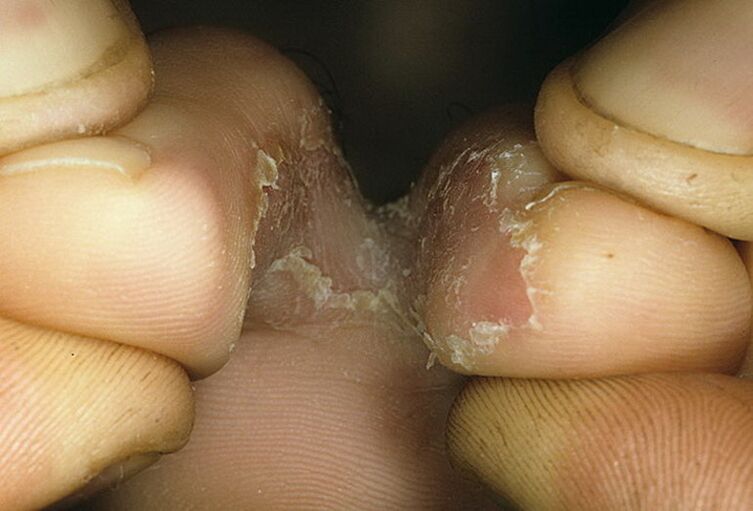
Hasten more widespread and is born independently.Less often, this form develops against the backdrop of squamous mycosis.The process affects the area between the 4th and 5th fingers of the foot.The main symptom is the appearance of cracks in an epidermis with a white edge.The surface layers of the skin are exfoliated.Between the fingers, weakening is formed.The patient complains of burning and itching.In areas of lesions, quite painful for touching the form of erosion.
The intriguing form is chronic in most cases, there is a long flow.The situation improves in the cold season and worsens during the summer.In patients with this form, the skin is released over time.Its protective functions have been reduced.This creates a favorable basis for streptococcal infection.In the epidermis, abscesses are formed, which are surrounded by swelling and redness sections.
Types of onycomycosis
This disease leads to damage to the nails in the fingers.The pathogen initially attacks the free ends of the plate.Here are the stripes and stains of a yellow shade.Some forms of onycomycosis are distinguished:
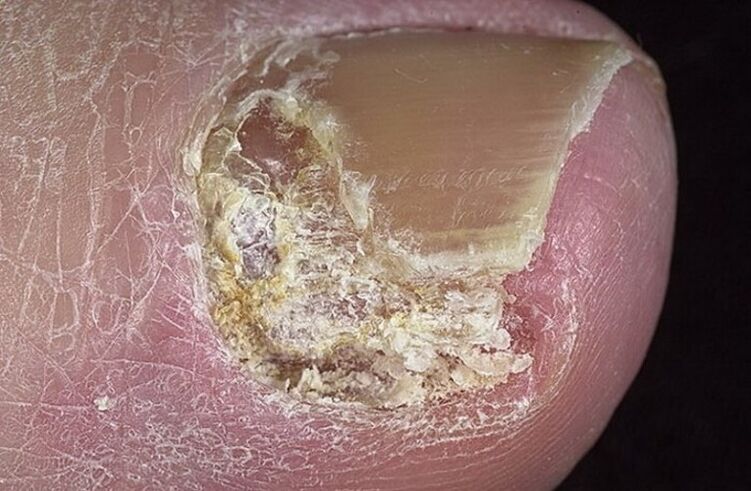
- Hypertrophic.The nail becomes yellow, its thickness increases.It crumbles, and the skin under the peeling and thickens.
- Atrophic.The opposite situation is noticed here, when the nail becomes thin and destroyed.The skin underneath is covered with a keratinizing layer.
- Caused by molds.Is formed against the backdrop of other types of nail diseases.The tile can be green, yellow, brown and sometimes even black.Paronichia is formed in the periologist space - purulent inflammation.
In 70% of cases, onycomycosis affects 3, 4 and 5 fingers in the leg.In 30% of cases, 1 and 4 fingers suffer.Very often, a normotrophic form of the disease is found when yellow spots are present on the nail, but its integrity is not violated.
Treatment of fungi
There are various treatment schemes for the disease that are individually selected by a physician.
Additional treatment methods include taking immunostimulants and vitamins.They help strengthen immunity.If a bacterial infection is joined, antibiotics are prescribed.Sometimes the appearance of a fungus infection is favored by the underlying disease.Should be treated in the first place.We are talking about dermatological pathology and chronic infections.Antihistamines are recommended in the presence of an allergic ingredient.
Traditional medicine
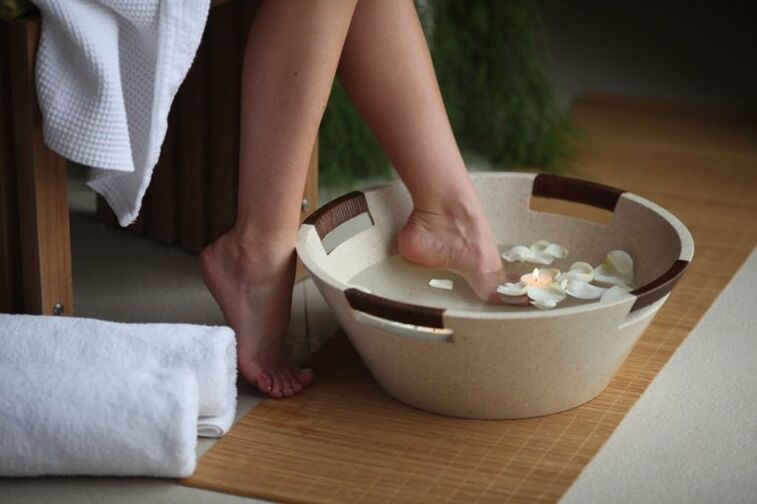
Mycosis does not pose an important risk to health.But their presence helps reduce immunity, acts as a focus of inflammation.Only antifungal therapy using specialized medicines helps to get rid of such a problem.In the early stages, the use of popular recipes, which are supplemented by basic therapy, is allowed.Which methods can be practiced:
- Reception of bathrooms;
- processing of areas affected by decoction of medicinal plants;
- Oil app.
For baths, you can get wine vinegar, as it has an antiseptic effect.First you need to wash your feet with warm water and dry them.Then, the wine vinegar is poured into the water in a ratio of 1 to 2 and the legs sit in it.They keep them there for 5 minutes, after which they put socks for the night and went to bed.
Another version of the bathroom involves the use of soda and salt.Take one tablespoon of the two ingredients and dissolve in water.After that, lower your feet in the solution, hold for no more than 15 minutes.At the end of the procedure, the legs are washed with warm water.
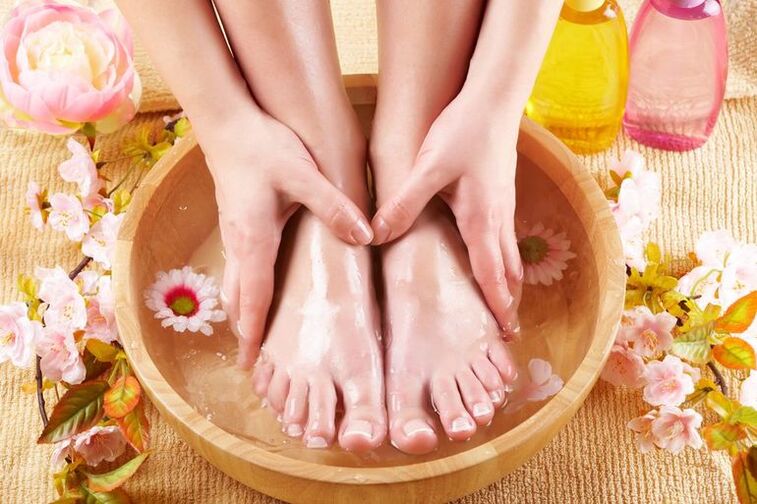
To treat the legs with therapeutic decoction, drug blinds and inflorescences of the calendula can be used.Also, oak bark, dried berries berries have a good antiseptic effect.The components selected are mixed in the same amount.3 tbsp.l.And pour a glass of water.Set small fire for 15 minutes.Filter and moisten the decoction with the resulting decoction.Also, this tool can be used for lotions.
To prepare a healing oil, they mix in the same amount of pork fat and ash as the timber.The resulting oil should be thick and have a homogeneous durability.Apply to clean legs and dry twice a day: in the morning and in the evening.



























